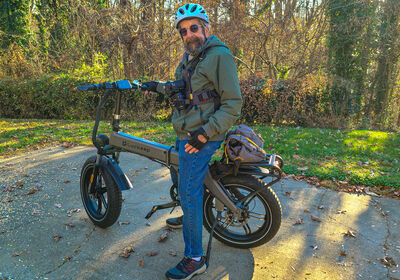Basics of Lightroom Sharpening
Jul 20, 2020 18:43:47 #
Beautifully done explainer. I continue to be in awe of your excellent command of the subject matter. I am a Canon veteran and I have begun experimenting with the new Topaz AI Sharpening tool. So far, I have been both pleased and impressed. However, it does seem a bit sluggish in Lightroom. But more effective in the latest version of Photoshop. Have you had any similar experience with the AI editing files that have begun to appear. And thank you for your always helpful comments.
Jul 20, 2020 18:57:40 #
Thank you Danielmb! I move slowly on cameras and software, as in continuing to run the older and unsupported versions of LR6 and Topaz DeNoise6. I've been holding off upgrading my EOS 5DIII and Sony a7II cameras so I haven't been pressed to upgrade any software as well. Although I shoot in RAW and edit all my images, I do fall on the side of getting it 'closest to right' in the camera rather than extensive sharpening and noise in post. I've seen some great edits from the AI software; and yet, I see much better results directly from the camera when good technique is used. The 'masked' sharpening of LR is the big take-away from this post.
Jul 21, 2020 20:15:17 #
I haven't had a chance to read it in detail but it looks like a nicely done tutorial. This should be made a "sticky" if UHH does that. Thanks for the effort.
Jul 21, 2020 21:26:45 #
10MPlayer wrote:
I haven't had a chance to read it in detail but it looks like a nicely done tutorial. This should be made a "sticky" if UHH does that. Thanks for the effort.
Thank you! In the meantime, consider creating your own bookmark to the post.
Jul 22, 2020 09:27:57 #
10MPlayer wrote:
In addition to the handy "bookmark" feature, many of the volunteer-moderated sections have stickied docs. If you go to "all sections" at the bottom of this page, then click on a specific section, you'll find them.... This should be made a "sticky" if UHH does that...
Below is the current list of tutorials and tips for PP Forum; several of Paul's are included
 If anyone knows of additional UHH user-written resources for processing, please send me a link via pm. Thanks!
If anyone knows of additional UHH user-written resources for processing, please send me a link via pm. Thanks! https://www.uglyhedgehog.com/t-645056-1.html
.
Sep 6, 2020 18:35:39 #
Sep 8, 2020 14:46:53 #
Nicely done. Thanks for the effort. I've never understood the mask or the radius settings. You've cleared it up for me. (pun not intended)
One question, how do I make a preset?
One question, how do I make a preset?
Sep 8, 2020 21:36:51 #
10MPlayer wrote:
Nicely done. Thanks for the effort. I've never understood the mask or the radius settings. You've cleared it up for me. (pun not intended)
One question, how do I make a preset?
One question, how do I make a preset?
I'd start with Adobe documentation, such as this intro: https://helpx.adobe.com/lightroom-cc/how-to/photo-presets-lightroom-cc.html
Jun 8, 2022 17:14:19 #
CHG_CANON wrote:
Thank you b AlohaBob, Richard, Bill, Myer, srt101... (show quote)
As other have stated, this was very informative. Thanks for taking the time.
Sep 13, 2022 07:37:06 #
CHG_CANON wrote:
When you import your RAW images into Adobe Lightro... (show quote)
You just unlocked one of my mystery boxes. Thank you, Paul!
Sep 13, 2022 07:54:01 #
Sep 13, 2022 08:17:27 #
May 10, 2023 09:27:13 #
Paul, that was a great tutorial that I needed badly. Thank you for that wonderful discussion of sharpening.
May 10, 2023 09:31:56 #
Hereford wrote:
Paul, that was a great tutorial that I needed badly. Thank you for that wonderful discussion of sharpening.
Great, thanks!
Jun 13, 2023 19:37:42 #
CHG_CANON wrote:
When you import your RAW images into Adobe Lightro... (show quote)
This is a fantastic discussion that I had not seen before. Since this was written a few years ago, is it still appropriate today, and are there any updates? I mainly use Photoshop for all my editing. Do the same principles and techniques apply to photoshop editing for sharpness with version 2023? I use Topaz Photo IA and it does help, but there is no doubt that after removing noise, the image is not as sharp, even if you add sharpening in the Topaz workflow.
If you want to reply, then register here. Registration is free and your account is created instantly, so you can post right away.












